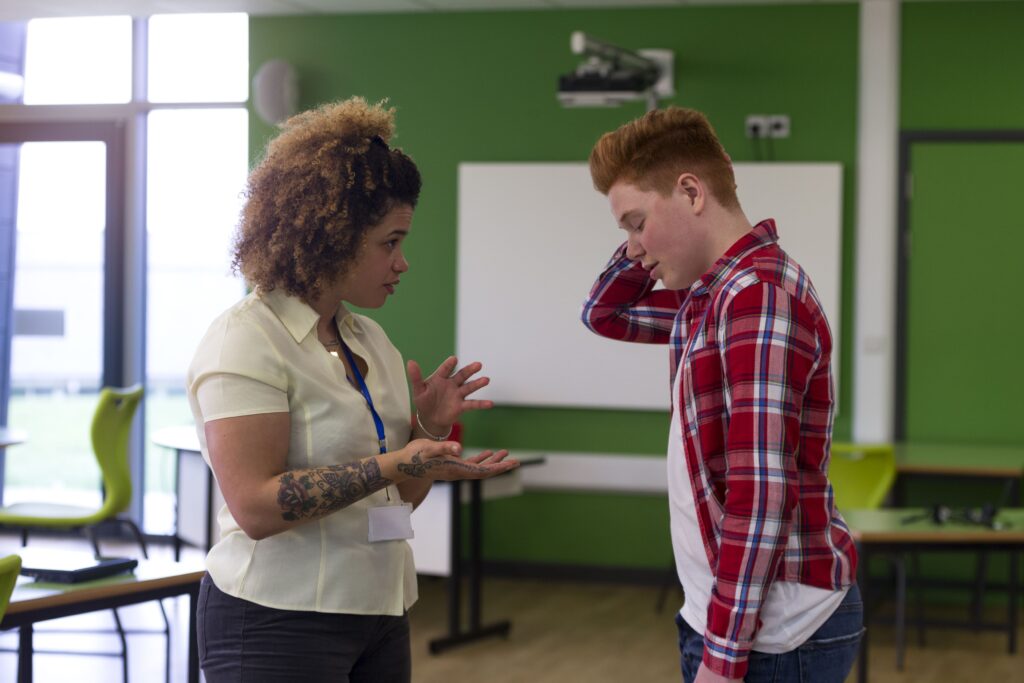In recent years, much has been written and promoted about alternatives to standard and traditional school punishments and disciplinary consequences, such as detention. It echoes the progressive critique of traditional educational methods across the board: What are you accomplishing through heavy-handed tactics? How are students growing when their only association with behavior modification is a simple unpleasant deterrence?
This is a worthwhile criticism. Students need to grasp more beyond: “Don’t do this because it’s wrong.” That gives them no insight into how to repair relationships or how to reflect on how their conduct has harmed an individual or collective group. Educators and administrators have chances to seize on these teachable moments to teach valuable lessons about accountability, restoration, and individual reflection.
First, a word of caution: there is such a thing as going too easy on a student when they have harmed another student, a group of students, or a staff member. Students must understand the gravity of violating another’s freedom, space, property, physical safety, and emotional health. I equate the importance of physical safety and emotional health because they are inextricably linked.
Now when an incident results in serious and grave consequences, you’re going to see a consequence that far exceeds detention. School detention, however, can serve as a consequence along the way to far more serious incidents, so if you employ it, you need to make sure you are discussing the importance of preventing behavior from escalating into something more serious.
Your goal with alternatives to detentions should be to replace the detention with another activity that serves as a means of accomplishing more than what the detention would. So, with all that being said, what valuable alternatives are there to assigning detentions?
Restorative Justice: The Overarching Principle
According to an NEA article, “Responsive Restorative Justice in Education (RJE) practices build accountability, promote social-emotional growth, and support positive behaviors in schools.”
When I mentioned earlier that an activity must replace detention, this is the principle we have in mind. The offending student has to take responsibility and then has to make good on their admission that they have committed a wrong. Below, I’ll expound on some principles that may come up during the process.
Mediation
Google Dictionary defines mediation as simply an intervention in a dispute involving two or more parties with the intention of resolving it. I have frequently employed this method with my students. With my more recent experience being at the elementary level, I have used it to avoid giving recess detentions to students. Instead of them sitting in the office during the allotted time, they come together, work to understand what it is they did wrong, and then resolve the issue by owning up to what they did and apologizing to the other party.
Mostly, this involves an incident where both students wronged each other. There are other times when the sole offending party has to take full responsibility and go about apologizing and making good on their promises. Hopefully, the students will gain more in this process and take away a more valuable lesson and skill, rather than just sitting out and missing valuable time to exercise and socialize.
Restitution
The Google Dictionary defines restitution as the restoration of something lost or stolen to its property owner or recompense for unjust and loss. In my experience, this has not been that common a practice simply because it hasn’t occurred very often on my watch. Still, it is a principle that schools can practice within reason. If a student intentionally damages another’s property or steals an item, they are responsible to replace the damaged or stolen item. This should be accompanied by an appropriate apology/mediation, etc.
The offending party needs to grasp the damage and hurt they have caused. You’ll have to adjust your methods according to what grade levels you are working with. Younger students will require more extensive involvement with parents. Still, the principle of restitution remains the same.
Reflection Assignments
One last method I have used for offending students is reflection assignments. Usually, this is an essay they write that reflects on what they did wrong and how they can go about making up for it. It contrasts with old methods of corporal punishment writing tasks where students wrote sentences over and over again with the goal of making them feel some type of adverse physical effect. Reflection assignments are the opposite. They focus on important themes of remorse, sorrow, and restitution and can go a long way in making a lasting impression on a student.
Even if you give detentions, these types of practices should be used alongside them. There should be some type of restorative activity along with every disciplinary consequence. If you can do a stand-alone restorative activity, I recommend it. Please ensure you emphasize accountability and that there is a substantive replacement for detention if you decide to forgo it. Best wishes to you!
Educators never stop learning; check out our available graduate degree programs to hone your skills and promote lifelong learning and academic excellence.




